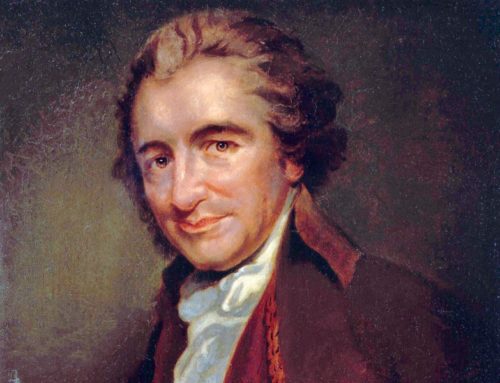

“Draw thee waters for the siege, fortify thy strong holds: go into clay, and tread the mortar, make strong the brick kiln.” —Nahum 3:14
The Fall of Constantinople, May 29, A.D. 1453
![]() n one of the greatest sieges of all time, Sultan Mohammed II, on May 29, A.D. 1453, captured the last Christian bastion in the Middle East, Constantinople, which had withstood every assault for 1,100 years. With the total collapse of the Byzantine Empire, the Muslim hordes were free to attack the West, where the symbolic capital of Christian Europe, Vienna, lay astride the Danube River — the city with the largest German-speaking population on the continent. Constantinople’s final collapse came with a huge cost to the Islamic army and total destruction of the defenders. The downfall of the Byzantine Empire also brought the dominance of the Ottoman Turks in the Middle East and parts of southern Europe until the twentieth century.
n one of the greatest sieges of all time, Sultan Mohammed II, on May 29, A.D. 1453, captured the last Christian bastion in the Middle East, Constantinople, which had withstood every assault for 1,100 years. With the total collapse of the Byzantine Empire, the Muslim hordes were free to attack the West, where the symbolic capital of Christian Europe, Vienna, lay astride the Danube River — the city with the largest German-speaking population on the continent. Constantinople’s final collapse came with a huge cost to the Islamic army and total destruction of the defenders. The downfall of the Byzantine Empire also brought the dominance of the Ottoman Turks in the Middle East and parts of southern Europe until the twentieth century.

Modern-day Istanbul

Constantine mosaic in Hagia Sophia
Now known as Istanbul, Constantinople was established by Constantine the Great in A.D. 323. The city walls loomed over the strategic straits that separated Europe from Asia, and served as the political and religious capital of Christendom in the East. Guarding both the Bosporus and the Dardanelles Straits, this mighty city also became the nexus of commerce, communication and invasion between the Black Sea and the Mediterranean. When the followers of Mohammed swept into Africa and the Middle East from the 7th to the 15th Centuries, Constantinople proved to be the one rock against which their heathen militant armies constantly broke. The forces of Eastern Orthodoxy and Islam contended for ascendancy in the region for all of those 700 years. In the 12th Century, Christian knights from Western Christendom conducted crusades to liberate the “Holy Land” from the Muslims and build up certain strongholds to protect pilgrimage routes to Jerusalem. Some of the crusaders attacked their fellow religionists of the Byzantine Church and even looted Constantinople. After a couple hundred years, the western knights were driven away by the followers of Mohammed. In 1452, Sultan Mohammed II decided that Constantinople must fall.

The Entry of the Crusaders into Constantinople, by Eugène Delacroix, 1840

Mohammed II and his army approach Constantinople
The Byzantine emperor Constantine XI Paleologus could count on only 5,000 local and 2,000 foreign troops to defend the triple walls that would have to be breached by the enemy. He also had the services of the renowned siege defensive expert, Giovanni Giustiniani, who brought 700 knights and archers from Genoa and the Greek island of Chios. Mohammed II threw against the walls of the city 70,000 regular troops and 20,000 men known as Bashi-Bazouks, who were fighting only for the loot of the city if it fell. The Janissaries, young men captured from Christian families as slaves and raised as fanatical Moslem suicide special forces troops, were there in abundance. The attackers were also well supplied with artillery, including a cannon called “the Basilica,” 27 feet long and capable of throwing a stone ball of 600 pounds.

After 12 days of bombardment, several breaches in the walls appeared, but the soldiers who stormed the weakened walls were thrown back with heavy losses. The attack on the city began on April 6, but a month later, the Sultan’s soldiers were no closer to taking the city and had suffered many dead and wounded. Attempts at digging mines under the walls to blow them up were all discovered and the attackers were roasted with “Greek fire” or drowned by flooding. Siege towers were destroyed by fire and wave after wave of attackers — including the Janisseries — were hurled back by the exhausted defenders. On May 29, in the midst of waves of attacks, some Turks found a small door in the wall — probably accidentally left open — and made their way inside, seizing a tower and running the Sultan’s flag up the flagpole. The defenders fell back and then their defenses collapsed.

The Ottoman Turks transport their fleet over land into the Golden Horn
The people inside the city were killed or enslaved, probably about 50,000. A few surviving soldiers managed to escape, though their commander, Guistiniani, succumbed to wounds. Constantine XI died in battle. The Turkish armies moved westward and laid siege to Vienna, a military conflict with the West that would last another couple hundred years and some would say is continuing now, by other means. Sixty years after the fall of Constantinople, Martin Luther posted his 95 Theses, and the harried Holy Roman Empire, distracted by the aggressions of the Muslims, would not be able to focus attention on what otherwise would have been the destruction of the Protestant Reformers.

Mohammed II. (c. 1430-81) enters Constantinople
Image Credits: 1 Modern-day Istanbul (Unsplash.com) 2 Constantine in Hagia Sophia (wikipedia.org) 3 Crusaders in Constantinople (wikipedia.org) 4 Mohammed II approaches Constantinople (wikipedia.org) 5 Siege map (wikipedia.org) 6 Fleet transported over land (wikipedia.org) 7 Mohammed II enters Constantinople (wikipedia.org)






